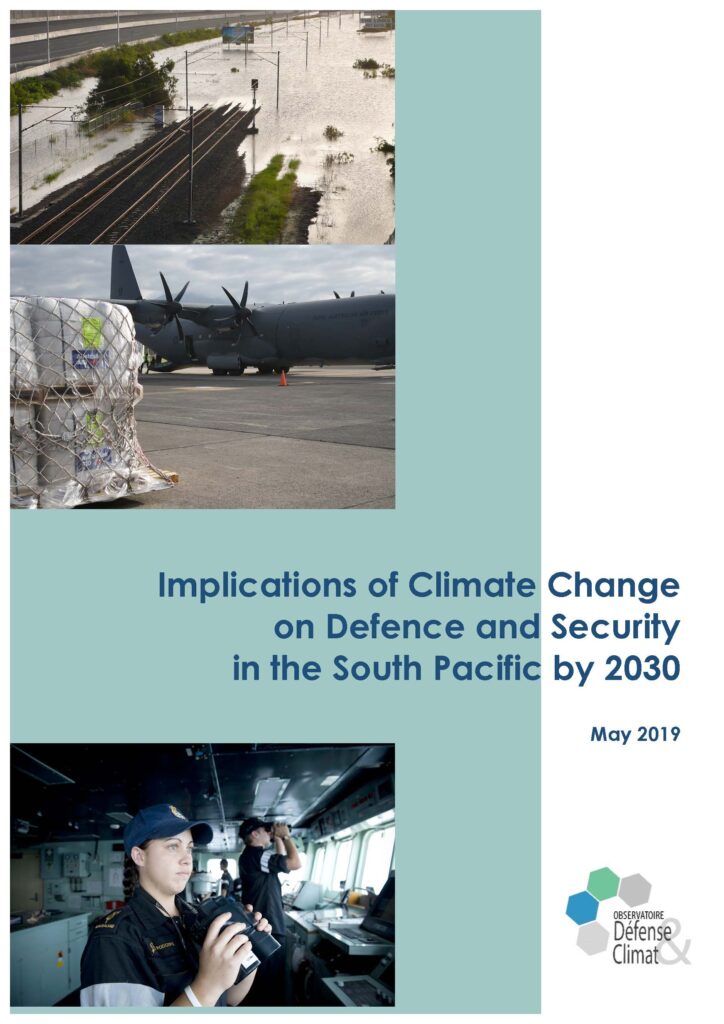Notes / Defence and Climate Observatory
30 May 2019
Implications of Climate Change in the South Pacific by 2030 – SPDMM

The South Pacific region covers the whole zone of the Pacific Ocean that is located south of the Equator, and comprises hundreds of islands. The South Pacific region will continue to be one of the world’s areas that will be most affected by the impacts of climate change. As affirmed by leaders at the 2018 Pacific Islands Forum, in the Boe Declaration, “climate change presents the single greatest threat to the livelihood, security and wellbeing of Pacific people” (Pacific Islands Forum Secretariat, 2018). Common climate challenges but also important disparities and strong historical and cultural links between countries of the region have fostered regional cooperation to build resilience to disasters and climate change for decades.
Indeed, the region is characterised by diversity between its different islands: it comprises some of largest islands in the world, but also some of the smallest; countries are at very different levels of development, ranging from least developed countries (Vanuatu, Tuvalu, Solomon islands) to some of the most developed countries in the world (Australia, New Zealand, France). Such differences imply some unequal capacities to address the impacts of climate change and have thus driven the need for regional cooperation allowing mutual assistance and sharing of best practices. Pacific Island countries, however, hold important indigenous knowledge on climate change adaptation. Where this cooperation is already well developed in the South Pacific region, there is still room for improvement in order to better respond to the multiple challenges raised by climate change.
Due to the high number of low-lying atolls, sea-level rise is naturally one of the most pressing concerns. Indeed, one of the most discussed and analysed impacts associated with climate change has been the potential implications of environmental hazards due to sea-level rise on small island states. Projections suggest that the low-lying atolls and islands that are highly dependent on coastal areas for socioeconomic activity are highly vulnerable to sea-level rise (Nurse et al., 2014). The impacts on coastal regions are likely to be exacerbated by an increase in the probability of high-intensity cyclones and associated storm surges. It is also likely that a drying trend across the south-western part of the Pacific would appear if the La Niña phase of the Southern Oscillation becomes more dominant, as projected. This will significantly affect natural resource management in the South Pacific (Preston et al., 2006; Power et al. 2017). Thus, freshwater resources on small islands, many of which are dependent on the positive pressure of freshwater lenses to ensure that salinity does not influence groundwater resources, could also be highly problematic. If more extreme precipitation events come about as projected in places such as Papua New Guinea, local flooding and landslides could become more of a problem. The Food and Agriculture Organization (FAO, 2008) suggests that the combined impacts of climate change, including impacts on local agriculture and fisheries, will significantly increase food insecurity throughout the region…



